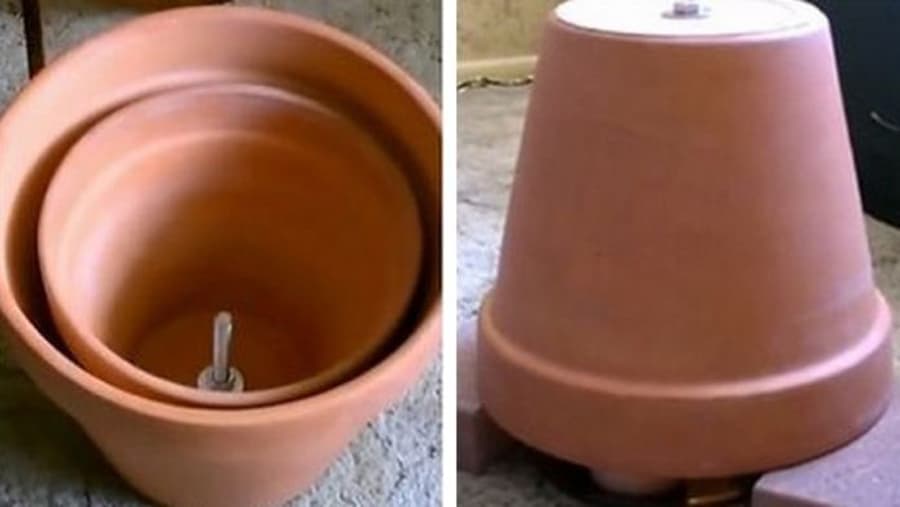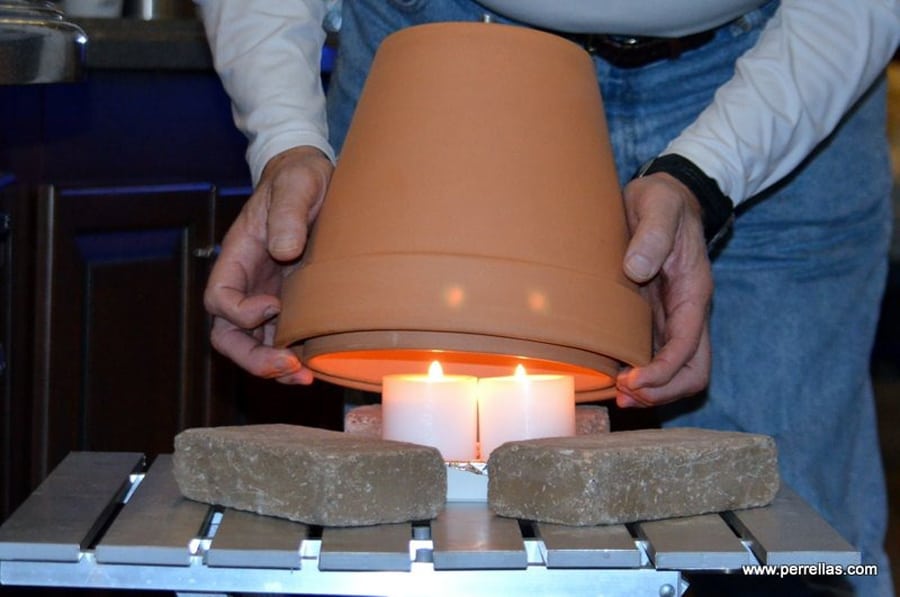Winter promises to be frosty and many EU residents are preparing for the cold in advance. Some save up money to pay large heating bills, others are looking for free heating methods for an apartment.
A completely simple heater in design was invented by my friend from France. He called his invention "home."

Making a home heater
The cost of the "home" is minimal. For business you will need:
- 6 washers.
- 6 nuts.
- Threaded rod 30 cm long.
- Ceramic tray (saucer) with a diameter of 31 cm.
- Ceramic flower pots with a volume of 1.7 liters and 5.5 liters.
A drill is also required for operation.
In the center of the pan, drill a hole and insert the shaft, securing it on both sides with nuts and washers. Then, pots are fastened on it in the same way (there are already holes in them) so that between the edge of the pot and the pallet, and also between the pots themselves there should be 4 cm.

This completes the process of creating a heater. In order for him to start heating the room, the “home hearth” should be turned upside down and set 3-4 tea candles on a pallet. Heat will begin to spread in 40-50 minutes.

Principle and features of work
A friend admits: "I can not give a scientific explanation of the heater. I think the whole thing is the principle of a heat pump, when the candles heat the pots, and the air circulating between them absorbs this heat and rises."

"Home" is quite effective: in a room of 40 square meters. m and an internal temperature of 20 ° C (with an external temperature of 0 ° C) after an hour, the thermometer begins to show a warming of 1 ° C. In this case, only 4 tea candles are used!
Of course, the heater cannot be compared with a working radiator with a power of 2000 watts. But as a mobile means of generating heat, it is almost ideal and, most importantly, does not require payment.
However, one cannot ignore some of the disadvantages of the invention. And the main one is carbon monoxide from burning candles. This substance gradually accumulates, so ventilation must be taken into account before using the heater.
